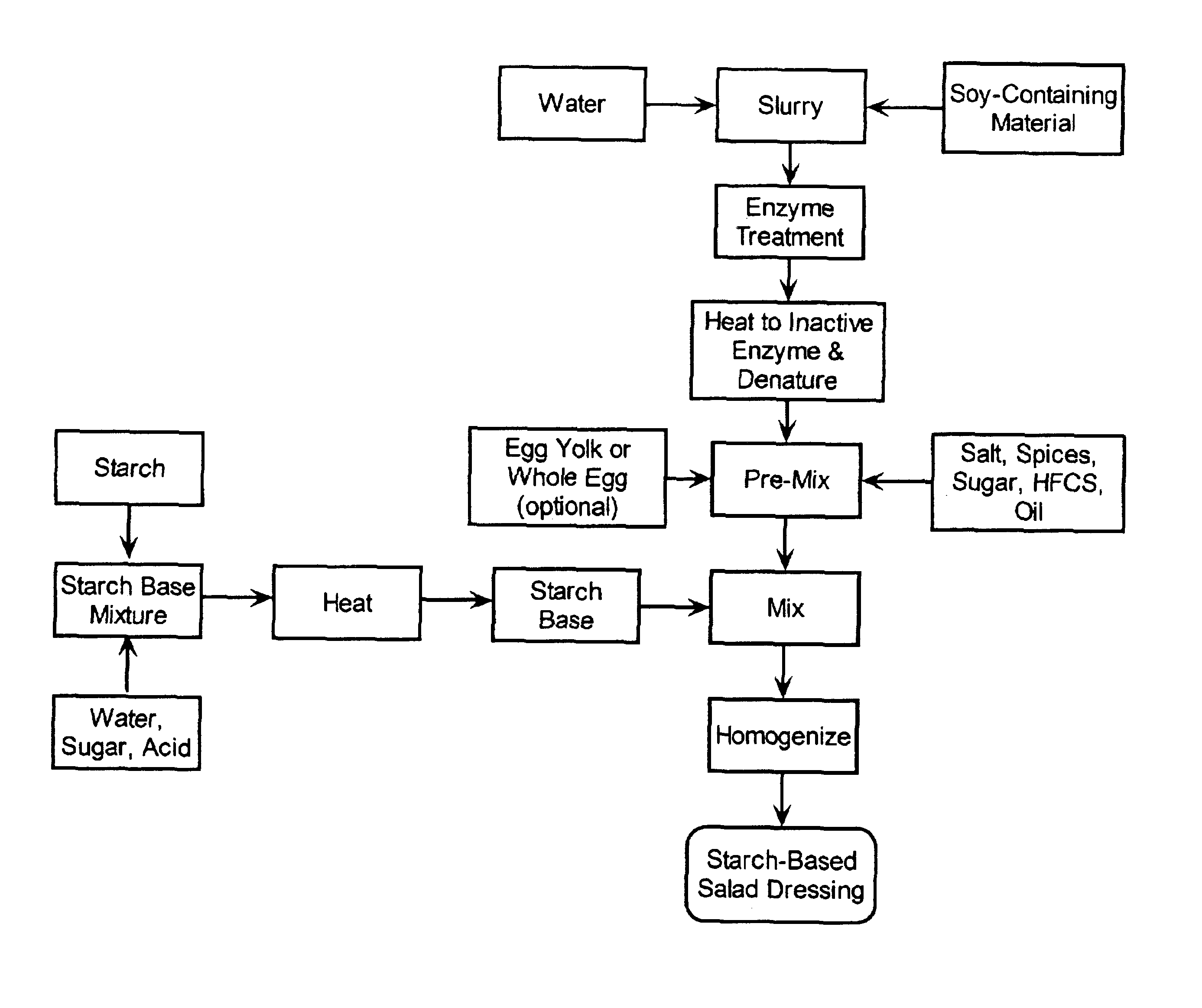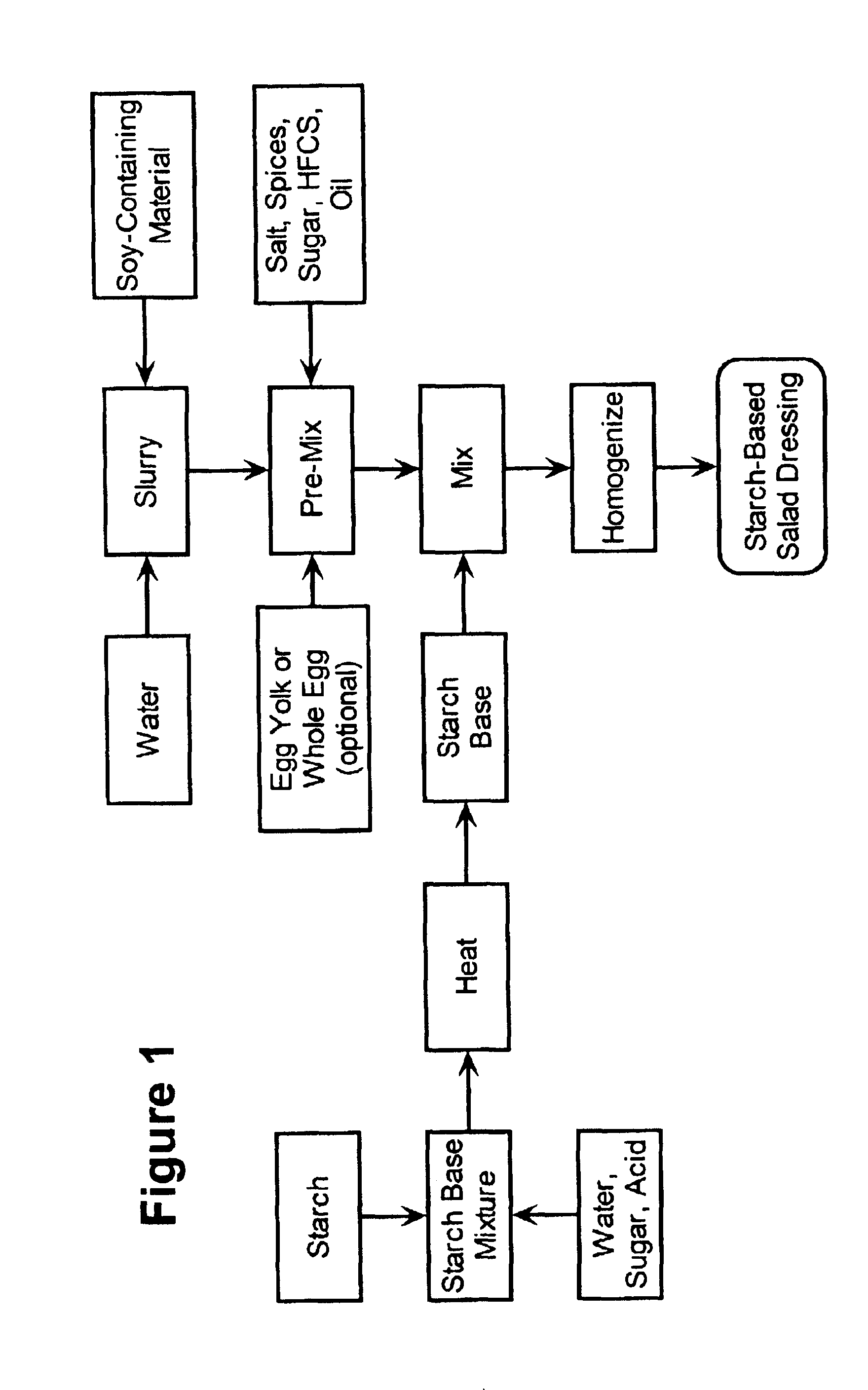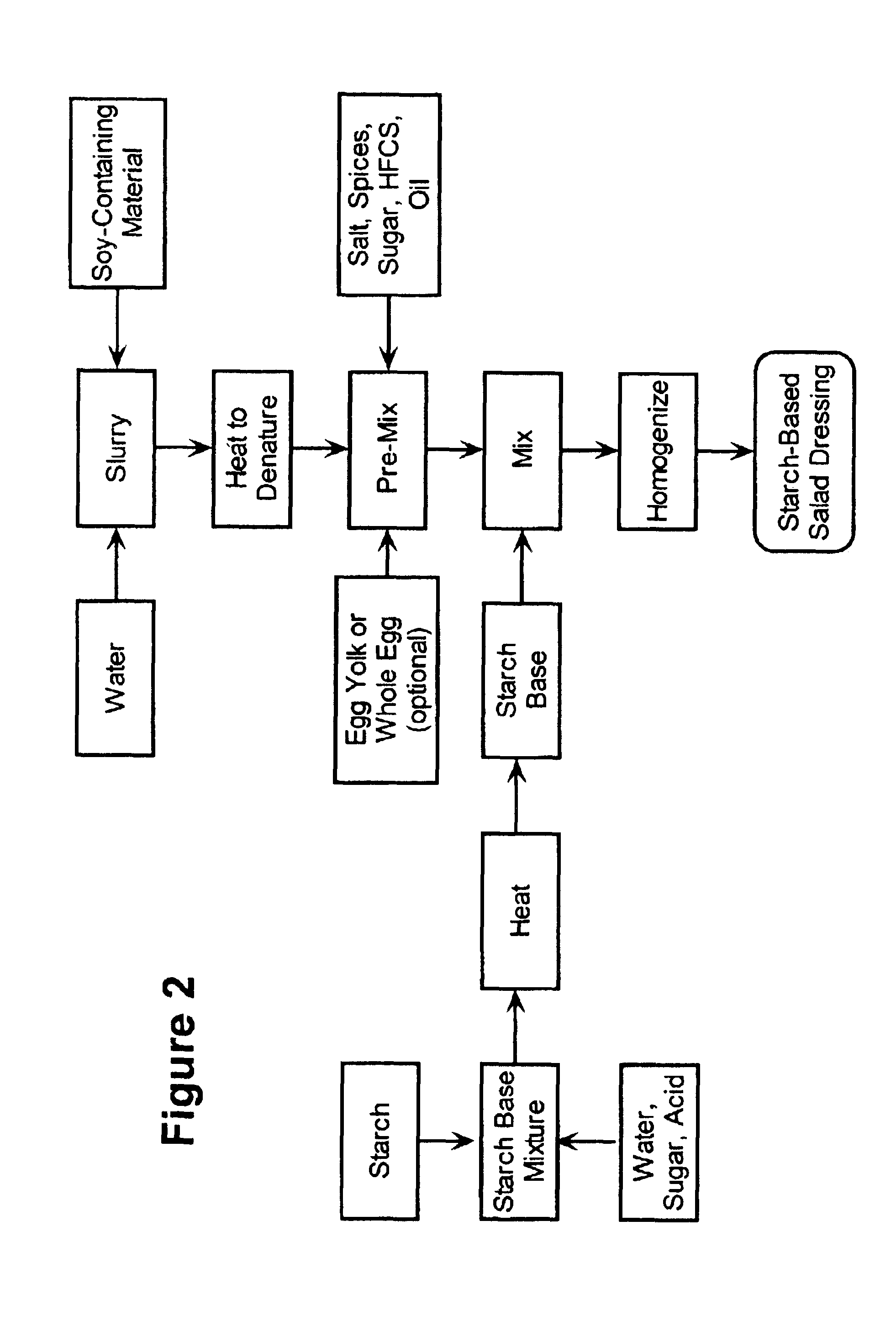Soy protein as an emulsifier for starch-based salad dressing
a technology of soy protein and starch, which is applied in the field of soy protein as an emulsifier for starch-based salad dressing, can solve the problems of soy protein isolate, not as widely accepted for use in food products in the united states, and the most expensive of the three major sources of soy protein, and achieve the effect of enhancing the emulsifying properties or activating the soy protein
- Summary
- Abstract
- Description
- Claims
- Application Information
AI Technical Summary
Benefits of technology
Problems solved by technology
Method used
Image
Examples
example 1
In order to determine the emulsifying values of soy flour, soy protein concentrate, and soy protein isolate, each one was tested in a model emulsion system. The specific formulations of Formulas 1 (control) and 2 (inventive sample) are presented in Table 1.
TABLE 1IngredientFormula 1 (%)Formula 2 (%)Water36.538.8-39.1Soybean oil3232High fructose corn syrup77Acid77Egg yolk / whole egg63Sugar55Starch44Salt22Spices0.50.5Soy protein00.4-0.7
Soy flour, soy protein concentrate, and soy protein isolate were evaluated at a 32 percent soy bean oil level on a bench top scale (1 kg) using Formulas 1 and 2. These samples were also compared to a commercial salad dressing (i.e., Kraft MIRACLE WHIP™). Three inventive samples were prepared wherein about half of the normal egg yolk / whole egg was replaced with soy protein isolate: (1) a product containing 3 percent egg yolk / whole egg product and 0.68-0.72 percent soy flour; (2) a product containing 3 percent egg yolk / whole egg and 0.51-0.55 percent soy p...
example 2
Commercially available soy flours were evaluated for use in the present invention. Three soy flours from ADM (Toasted NUTRISOY™ 063-160, Bakers NUTRISOY™ 063-100, and NUTRISOY™ 7B 063-130) and three soy flours from Cargill (Nos. 200 / 20, 200 / 70, and 100 / 90) were tested.
Protein dispersibility indexes (PDI) were provided by the suppliers. PDI provides an estimate of the degree of dispersed protein in the soy protein material. The tested soy flours had the following PDIs:
SamplePDI (%)ADM 063-16025Cargill 200 / 2020ADM 063-10060Cargill 200 / 7070ADM 063-13090Cargill 100 / 9090
During the salad dressing manufacturing process, it is preferred that the protein mix have a low or modest viscosity prior to acidification, but a high viscosity after acidification (i.e., during the mixing of the premix and starch base). Soy flours may be prepared under a variety of conditions. For example, they may be water washed or solvent / water washed and / or dried at different temperatures for different times. As a r...
example 3
In order to determine if heat treatment and enzyme treatment enhanced the functionality of the soy flour, the soy flour was treated with heating or in situ controlled enzyme hydrolysis and then evaluated after incorporation into the starch-based salad dressing.
Soy flour treated with heat and soy flour treated with controlled enzyme hydrolysis were evaluated at pilot plant scale (180 lb.) at both 32 percent and 25 percent soy bean oil levels using Formula 2 (see Table 1 above) and Formulas 3, 5, and 6 (see Table 2 below). Control samples having Formulas 1 and 4 were also prepared for purposes of comparison. The specific formulations of Formulas 1 and 2 are presented in Table 1 above and the specific formulations of Formulas 3, 4, 5, and 6 are noted in Table 2 below.
TABLE 2Formula 3Formula 4Formula 5Formula 6Ingredient(%)(%)(%)(%)Water414244.547Soybean oil32252525High fructose7777corn syrupAcid76.56.56.5Egg yolk / 073.50whole eggSugar5555Starch4555Salt2222Spices0.50.50.50.5Soy protein1....
PUM
 Login to View More
Login to View More Abstract
Description
Claims
Application Information
 Login to View More
Login to View More - R&D
- Intellectual Property
- Life Sciences
- Materials
- Tech Scout
- Unparalleled Data Quality
- Higher Quality Content
- 60% Fewer Hallucinations
Browse by: Latest US Patents, China's latest patents, Technical Efficacy Thesaurus, Application Domain, Technology Topic, Popular Technical Reports.
© 2025 PatSnap. All rights reserved.Legal|Privacy policy|Modern Slavery Act Transparency Statement|Sitemap|About US| Contact US: help@patsnap.com



